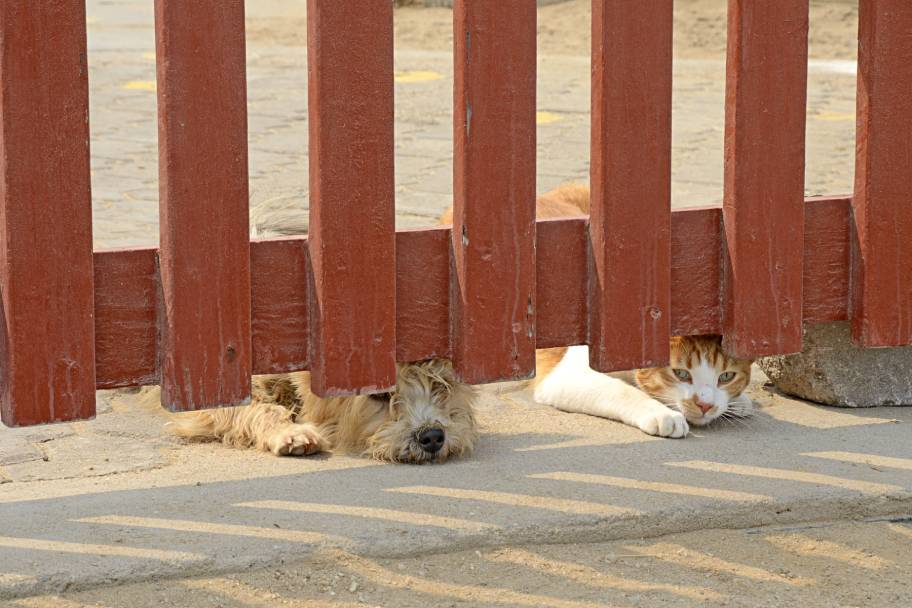How Do Cats Feel Cold? Vet-Approved Facts & FAQ

Updated on
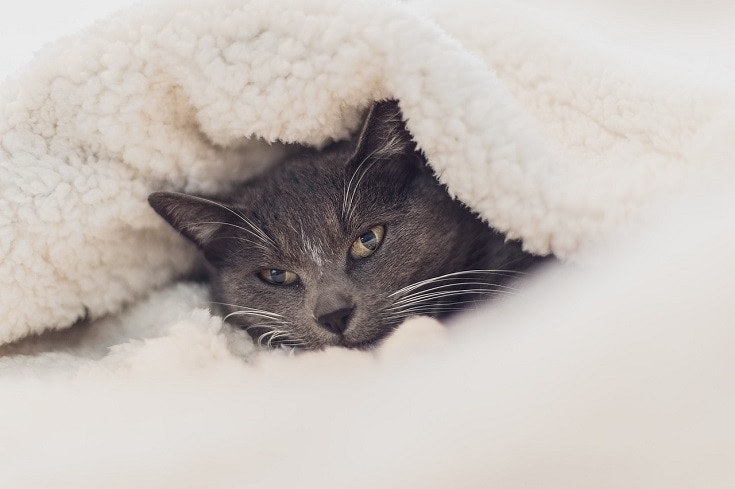
Cats are highly adaptable animals that can adjust to most conditions and a wide range of temperatures, but virtually all cats are susceptible to extremely cold temperatures, and some cats can really feel the chill, even if conditions are not that extreme.
Hairless cats, those that live in typically warm conditions, and younger and older cats with certain health conditions are especially prone to cold-related health conditions like frostbite and hypothermia.
Do Cats Get Cold?
Apart from short-haired breeds, cats have a long and thick coat, and most either stay inside or have some kind of shelter to retreat to. But they can still get cold. If they get shut out of the house on a cold day or if they get caught in an unheated part of the house on a very cold day, they can get cold.
Too Cold for Cats
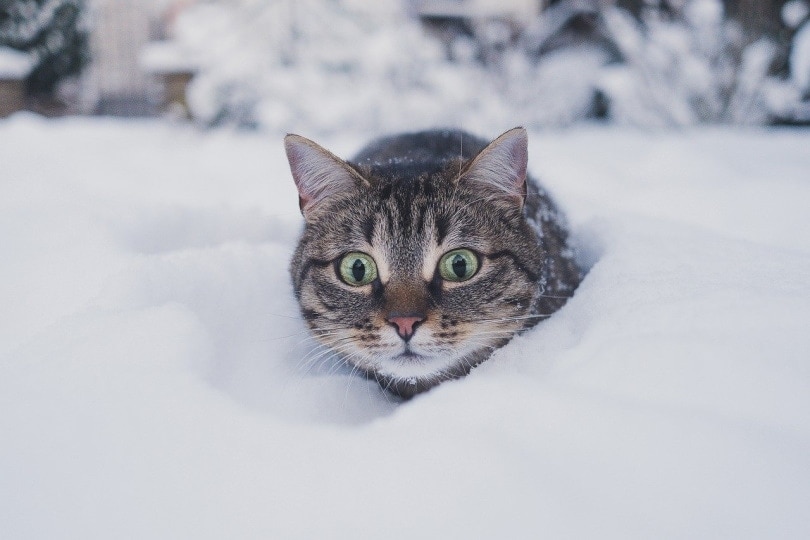
Generally, cats should be fine with temperatures above 45 degrees Fahrenheit (7 degrees Celsius), but they can get too cold at temperatures below this. They are especially susceptible to freezing temperatures, so do ensure that you offer some kind of protection and shelter during cold winter months.
If you have a kitten, a senior cat, a hairless cat breed, or a sick cat, they are especially susceptible to the cold and will need to be kept in warmer temperatures than this.
Signs Your Cat Is Cold
Cats do recognize when they are too cold, and their body may also react to very cold temperatures. Typical signs that your cat is feeling the cold include shivering, curling up, and puffed-up fur, and they may go looking for warmer places, like next to heated vents or by hot pipes.
Warning Signs of Hypothermia
Hypothermia in cats starts when their body temperature falls approximately below 98 degrees Fahrenheit (36.6 degrees Celsius). This can cause their heart rate to slow down and your cat’s body to become stiff. Their extremities, like their feet and ears, will feel very cold to the touch. Your cat will move less, and you may notice them breathing more slowly.
What to Do?
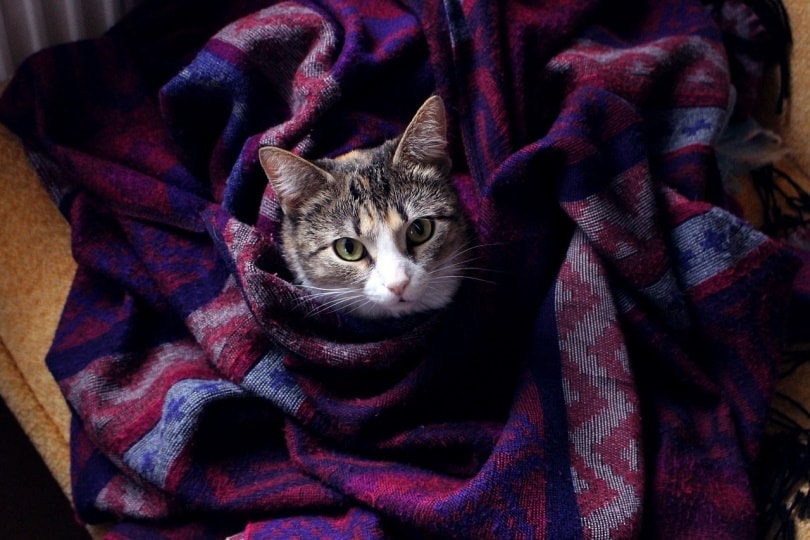
If your cat is suffering from the cold, dry them off, if wet, and move them to a warmer spot. You can use hot water bottles, but ensure they aren’t too hot. Get veterinary treatment as soon as possible.
How to Keep Cats Warm
Even if your cat is not suffering from hypothermia and is not dangerously cold, low temperatures can be uncomfortable and unpleasant for them. Outdoor cats should be provided with shelter, ideally insulated or protected from extreme cold temperatures. If you can’t leave the heating on, even in one room, provide blankets, consider an insulated cat cave-style bed, and keep your cat’s fur healthy and strong by feeding them a nutritious and well-balanced diet.
How Do You Know When a Cat Is Cold?
Signs that your cat is cold include shivering, puffed-up fur, and lethargy. Extremities like ears and feet also become cold to the touch. If you notice any of these signs, try to provide a warmer environment or somewhere your cat can warm up.
Do Cats Feel the Cold Like Humans?
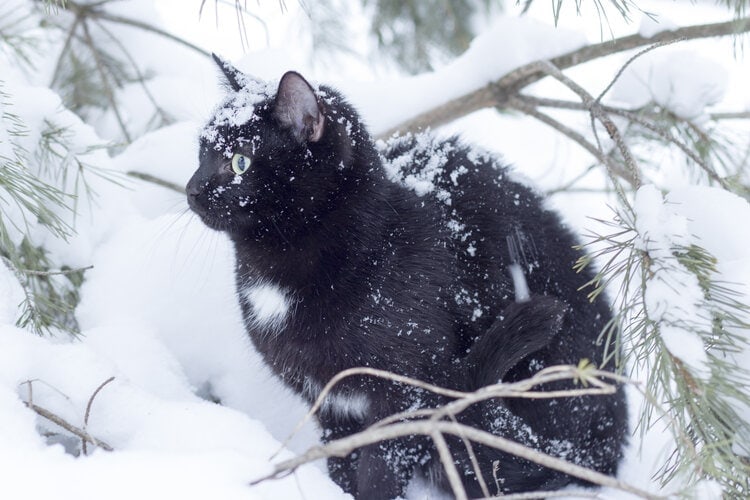
Cats have a similar body temperature to humans, just slightly higher which means that they can feel the cold too, though most cats do have fur to protect them. They can feel uncomfortable in cold temperatures and suffer many of the same physiological effects of extreme cold temperatures.
Do Cats Like Blankets?
All cats are different. Some love snuggling into and even under blankets, but some may dislike the feeling of being smothered. If your cat likes getting under bedding or hiding in piles of clothes, it’s a good sign that they would appreciate a blanket of their own. If your cat is especially cold, even if they aren’t usually a fan of blankets, they may appreciate a warm blanket to rest on.
What Temperature Do Cats Like?
Cats typically love warmth. They bask in the sunlight, rest on radiators, and curl up on your lap to generate more heat. Most cats prefer a temperature between 86 and 97 degrees Fahrenheit (30 and 36 degrees Celsius) but are comfortable in temperatures between 60 and 70 degrees Fahrenheit (15.5 and 21 degrees Celsius).
Can Cats Survive in the Cold?
Cats are adaptable animals, and most do have a coat of fur to help insulate them. However, domesticated cats have also become used to home comforts, and, in any case, if their body temperature drops too low, it can be potentially fatal. They can suffer from frostbite, as well as hypothermia. Some breeds, like Siberian cats, are especially well adapted to survive cold temperatures.
Others, like the Sphynx, lack fur and may need an artificial jumper to keep them warm in especially cold conditions.

Conclusion
Cats are adaptable animals, and they can survive chilly temperatures in most cases. However, they can also become very ill if exposed to extremely cold temperatures, especially if they also become wet and are not provided with a means of getting warm. Kittens, seniors, sick cats, and those with no hair at all are better adapted to warm conditions and can really suffer in cold weather.
Longhaired cats and breeds that originate from cold climates are better suited to cold conditions. Look for signs that your cat is cold, such as shivering and cold extremities, and find ways to provide a warm spot, to keep your feline friend safe and warm even in very cold conditions.
- You Might Also Be Interested in: My Cat’s Ears Are Cold: Vet Reviewed Causes & Reasons
Featured Image Credit: Dimhou, Pixabay




